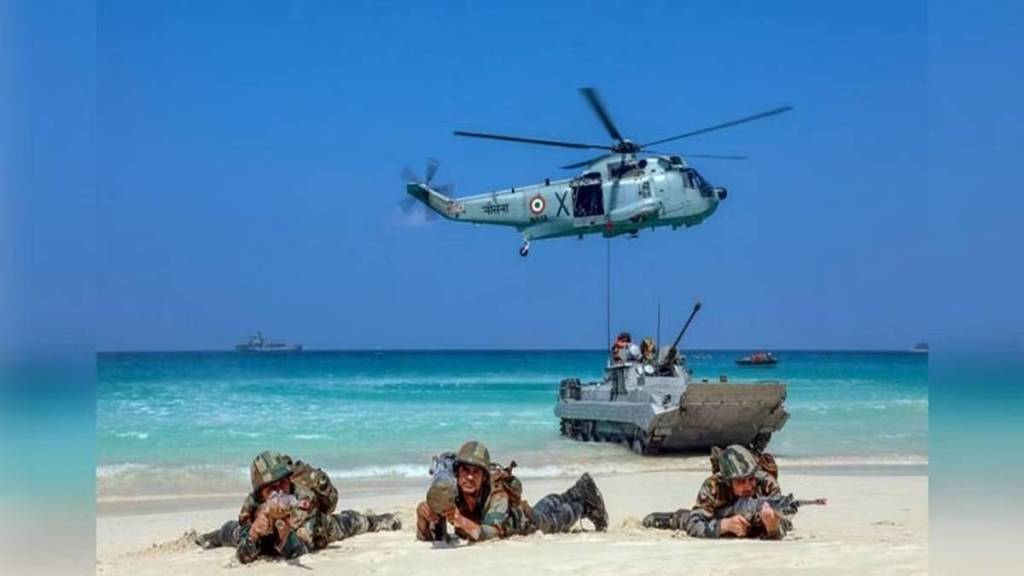In a significant development for India’s armed forces, plans for the establishment of the country’s first Integrated Theatre Command (ITC) are nearing completion. The ITC aims to enhance inter-service cooperation and jointmanship, contributing to improved national security.
Sources within the defense establishment suggest that the announcement regarding the formation of the ITC is likely to be made on August 15. The initial step involves designating the South Western Command in Jaipur as the inaugural theatre command. Jaipur, home to the Army’s South Western Command (SWC), will be the headquarters for the theatre command that will look after Pakistan. To take care of the borders with China, another theatre command is likely to come up in Lucknow – Headquarter of Central Command.
This initial step will consolidate the South Western, Western, and Southern Commands of the Army, along with select elements from the Northern Command. The IAF’s Western and South Western Air Commands, together with elements from the Central and Southern Commands, will also be incorporated into this theater command structure.
The proposed Maritime Theatre Command, to be headquartered in Karwar, Karnataka, will provide comprehensive security coverage of coastal and maritime boundaries, further bolstering India’s defence capabilities.
Strengthening Defence and Security:
The establishment of the ITC reflects India’s commitment to adapting its military structure to the evolving strategic landscape. By implementing an integrated theater command, India seeks to address shortcomings, enhance efficiency, and tackle challenges effectively. The South Western Command, as the experimental theater command, will play a pivotal role in identifying and resolving deficiencies, thereby setting the stage for subsequent theater commands. These commands will encompass the Western Integrated Theatre Command, responsible for the defence and security of the border areas with Pakistan, and the Northern Integrated Theatre Command, overseeing the border areas with China.
The Concept of ‘One Border One Force’:
The ITCs are aligned with the concept of ‘One Border One Force,’ which envisions a unified command structure to safeguard strategic and security concerns within specific geographic theaters. By streamlining the command hierarchy, the ITC will enable better coordination and synergy among the three armed services. This unified approach aims to optimize resources, enhance operational capabilities, and improve decision-making processes.
Selection of Integrated Theatre Commander:
Discussions are currently underway to select the first Integrated Theatre Commander, a pivotal role in overseeing the unified command structure. Seniority principles dictate that Lieutenant General RP Kalita, General Officer Commanding-in-Chief of the Kolkata-based Eastern Command, could be a potential candidate. Another option is Lieutenant General BS Raju, the current commander of the South Western Army. The chosen commander will possess extensive experience, strategic acumen, and the ability to foster collaboration and coordination among the services, ensuring the successful implementation of the integrated theater command structure.
Joint Commands
Additionally, several joint commands, such as logistics, training, cyber, space, missiles, and intelligence, will be established and headed by three-star officers. These joint commands will report to the Chief of Integrated Defence Staff to the Chairman Chiefs of Staff Committee (CISC), who operates under the purview of the CDS. The service chiefs will retain responsibility for raise and sustenance matters. As for the leadership of the first theater commander, a decision regarding this crucial role is yet to be finalized by the defense leadership.
Retirement Age and Existing Command Structures:
The retirement age of the Integrated Theatre Commander will be set at 61 years. This aligns with the existing retirement age for Lieutenant Generals and equivalent ranks, while Services chiefs retire at 62 years or after three years of service. It is important to note that the establishment of the ITC will not create additional posts or ranks. Instead, personnel will be drawn from the existing command structures of the Army, Air Force, and Navy, ensuring a smooth transition and continuity of expertise.
As India adapts to the evolving strategic landscape, the ITC will ensure a cohesive and comprehensive approach to safeguarding national security. The stage is set for a new era of inter-service cooperation, jointly securing India’s borders and strategic interests.


